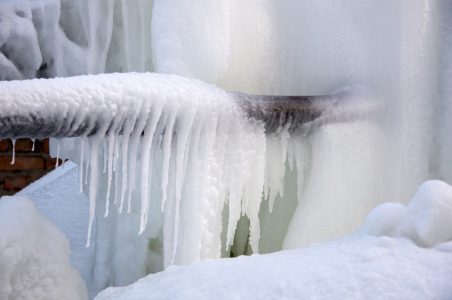How do you really feel with regards to Winter Plumbing Precautions: Preventing Frozen Pipes?

Cold weather can wreak havoc on your pipes, especially by freezing pipelines. Here's exactly how to prevent it from taking place and what to do if it does.
Introduction
As temperatures decline, the risk of frozen pipelines boosts, potentially leading to costly repair services and water damages. Comprehending exactly how to avoid icy pipes is critical for property owners in chilly environments.
Avoidance Tips
Shielding at risk pipelines
Cover pipes in insulation sleeves or make use of heat tape to shield them from freezing temperature levels. Concentrate on pipelines in unheated or exterior locations of the home.
Home heating strategies
Maintain interior areas effectively heated, especially areas with plumbing. Open cabinet doors to permit cozy air to distribute around pipelines under sinks.
Exactly how to determine frozen pipelines
Look for reduced water flow from taps, unusual odors or sounds from pipes, and noticeable frost on subjected pipelines.
Long-Term Solutions
Structural adjustments
Think about rerouting pipelines far from outside wall surfaces or unheated locations. Add additional insulation to attic rooms, basements, and crawl spaces.
Upgrading insulation
Purchase top quality insulation for pipes, attics, and walls. Proper insulation assists preserve constant temperature levels and lowers the risk of frozen pipes.
Protecting Exterior Plumbing
Yard hoses and exterior taps
Disconnect and drain garden hose pipes before winter season. Install frost-proof spigots or cover outdoor taps with shielded caps.
Understanding Icy Pipelines
What creates pipelines to freeze?
Pipes freeze when exposed to temperature levels listed below 32 ° F (0 ° C) for extended periods. As water inside the pipes ices up, it expands, taxing the pipeline walls and possibly triggering them to break.
Dangers and damages
Frozen pipes can result in water interruptions, property damage, and costly repair work. Ruptured pipelines can flooding homes and create substantial architectural damage.
Signs of Frozen Pipeline
Determining icy pipes early can avoid them from breaking.
What to Do If Your Pipelines Freeze
Immediate activities to take
If you believe icy pipelines, maintain faucets available to eliminate pressure as the ice melts. Use a hairdryer or towels taken in warm water to thaw pipes gradually.
Final thought
Stopping frozen pipelines requires aggressive procedures and quick feedbacks. By recognizing the causes, indicators, and preventive measures, homeowners can shield their plumbing throughout cold weather.
5 Ways to Prevent Frozen Pipes
Drain Outdoor Faucets and Disconnect Hoses
First, close the shut-off valve that controls the flow of water in the pipe to your outdoor faucet. Then, head outside to disconnect and drain your hose and open the outdoor faucet to allow the water to completely drain out of the line. Turn off the faucet when done. Finally, head back to the shut-off valve and drain the remaining water inside the pipe into a bucket or container. Additionally, if you have a home irrigation system, you should consider hiring an expert to clear the system of water each year.
Insulate Pipes
One of the best and most cost-effective methods for preventing frozen water pipes is to wrap your pipes with insulation. This is especially important for areas in your home that aren’t exposed to heat, such as an attic. We suggest using foam sleeves, which can typically be found at your local hardware store.
Keep Heat Running at 65
Your pipes are located inside your walls, and the temperature there is much colder than the rest of the house. To prevent your pipes from freezing, The Insurance Information Institute suggests that you keep your home heated to at least 65 degrees, even when traveling. You may want to invest in smart devices that can keep an eye on the temperature in your home while you’re away.
Leave Water Dripping
Moving water — even a small trickle — can prevent ice from forming inside your pipes. When freezing temps are imminent, start a drip of water from all faucets that serve exposed pipes. Leaving a few faucets running will also help relieve pressure inside the pipes and help prevent a rupture if the water inside freezes.
Open Cupboard Doors
Warm your kitchen and bathroom pipes by opening cupboards and vanities. You should also leave your interior doors ajar to help warm air circulate evenly throughout your home.

I'm very focused on Winter Plumbing Precautions: Preventing Frozen Pipes and I really hope you enjoyed reading our page. Are you aware of another person who is involved in the niche? Take a moment to promote it. Thanks for taking the time to read it.
Click Here
Comments on “Protecting Your Pipes from Freezing Damage: Key Tips”